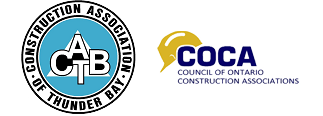Employee engagement has been a hot topic of conversation for about 8 years now, yet many managers I speak to have no idea what it is. I am not sure why, and not going to try and figure it out either.
Employee Engagement in its very simplest terms is a measure of how much employees care and are truly connected to their organization/company. Extensive research shows only 30% of employees are truly engaged in the workplace. (either in the Moderately or Highly Engaged category)
The # 1 key driver of Employee Engagement is related to the relationship the employee has with their manager.
The valuable trust which can be developed here is a direct function of how well you talk with people, what you say, how well you listen, and how well you really get to know people. How you do this is via conversations in the workplace.
Highly Engaged Employees – are strongly connected to the workplace, they give extra effort, they know what the company is trying to accomplish, they feel valued and they tend to stay with the company
Moderately Engaged Employees – they are only somewhat connected to the workplace, sure they care but often the required effort is missing to be highly engaged, usually something is holding them back from being highly engaged, yes they are productive but could be doing a lot better
Marginally Engaged Employees – these employees are just putting in time, not really connected in any way to the workplace, they often have a ‘who cares’ attitude, they are not very motivated and they often end up leaving, and when they don’t it really hurts the company
Disengaged Employees – totally disconnected from the workplace, negative attitudes and thinking, disruptive to productivity, they often actively work against the company. Left alone or not properly managed, they can be very dangerous on many fronts. More often than not, these types need to be managed out of the company.
Many Managers out there have little idea about their role in developing and managing people that report to them. They get so consumed in their own jobs that others suffer, people are not given proper direction and feedback, employee engagement suffers. BUT, does it have to be this way??? NO!!!!
Adopting a structured 1:1 meeting process can pay huge dividends, it is not hard to do and you can start anytime. One caveat, if you don’t have a process/plan in place for doing these 1:1’s or if you don’t keep them up or get used to them/good at them, you will lose even more credibility with your direct reports as a Manager.
One key ingredient in building strong trust based relationships is in giving people your time and also getting to really know them. This means knowing more than their spouse’s name or their favorite TV show or sports team, it means getting to really know your people, especially their goals, what stresses them, what excites them and how they define success. You need to understand your employees, know their dreams, disappointments, goals, motivators, fears, and the activities that build or drain their energy. Identify what is meaningful to your employees.
Effective management and leadership requires that you understand your employee’s perspectives & their hopes and dreams and that you present them with challenges that leads them in the direction they want to be moving anyways. How can you do this if you don’t have regular structured conversations or what I refer to as 1:1’s?
TwoGreySuits has a complete 1:1 process and also management tools/information to address almost any people management situation. Why wait to start, there is no downside. If done properly 30 minutes/week is all it takes, that’s 1% of managers time per week, so saying you don’t have enough time is questionable and if you don’t want higher employee engagement and better trust built relationships, you shouldn’t be a Manager!
By: Ron Guest, Senior Partner, TwoGreySuits www.twogreysuits.com



Leave a Reply
Your email is safe with us.